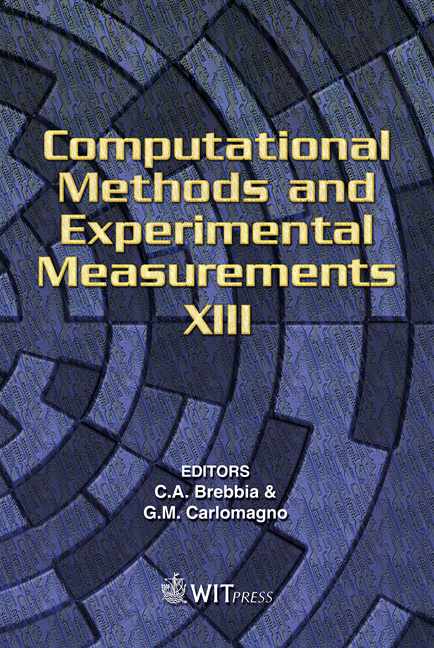Construction Of A Non-Newtonian Fluid Model Based On The Finite Difference Lattice Boltzmann Method
Price
Free (open access)
Transaction
Volume
46
Pages
10
Published
2007
Size
646 kb
Paper DOI
10.2495/CMEM070281
Copyright
WIT Press
Author(s)
S. Tajiri & M. Tsutahara
Abstract
A model of the lattice Boltzmann method for non-Newtonian fluids was constructed. The shear stress of purely viscous but non-elastic non-Newtonian fluid is a function of shear rate only. For the power-law model, only two constant parameters can cover shear-thinning and shear-thickening fluids. Two power-law models are introduced to the finite difference lattice Boltzmann method. One is a model in which the collision parameter (the relaxation time) is determined as a function of the shear rate, and then the viscosity changes point by point according to the shear rate. For the other model, the effect of the variable viscosity is introduced as an external force which is determined by the local shear rate. Two-dimensional channel flow between two parallel plates was calculated by using the above two models. Both models are shown to give satisfactory results. However, some discontinuity appears in the calculation by the former model that is due to instability of the calculation. For the latter model, smooth velocity distributions are always obtained. The shear rate is estimated by the second order and fourth order central finite difference scheme, but the accuracy of the velocity distribution is to first order. A model in which the normal stress can be introduced by the shear is being constructed in the same manner. The normal stress was given by introducing the single mode Giesekus constitutive model to the finite difference lattice Boltzmann method. Keywords: finite difference lattice Boltzmann method (FDLBM), non-Newtonian fluids, power-law model, Giesekus model.
Keywords
finite difference lattice Boltzmann method (FDLBM), non-Newtonian fluids, power-law model, Giesekus model.





